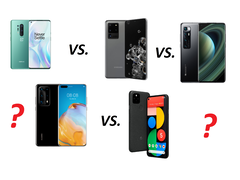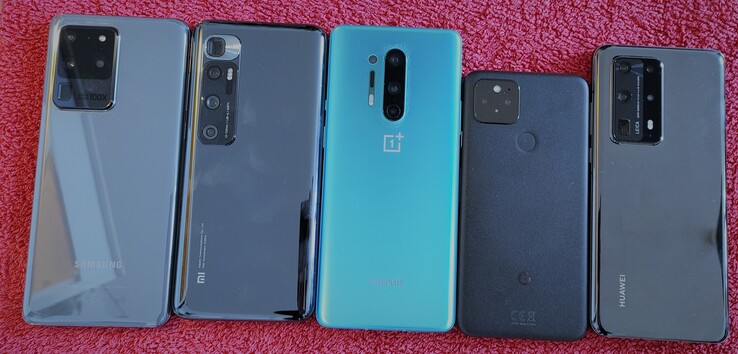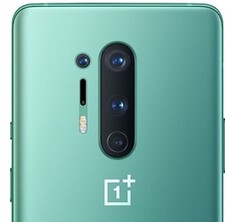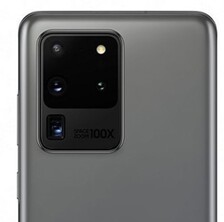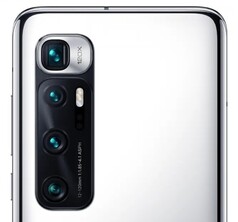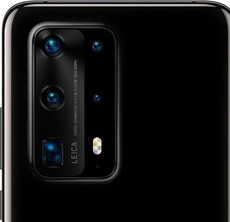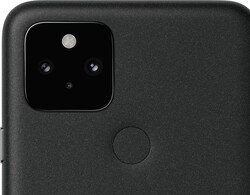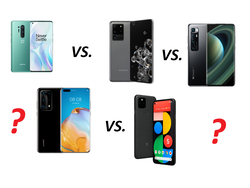After we have already tested high-end smartphones in the first half of the year, we now analyze other representatives from the Android department with the potentially best cameras on the market.
Whether Xiaomi's Mi 10 Ultra lives up to the hype about its cameras, Huawei once again provides the best low-light phone, or whether Google outshines the photo elite with its ingenious camera software in the Pixel 5, we will clarify in our final camera test for 2020.
We will take a closer look at the differences in photo quality using different photo subjects and light situations. But first, we will briefly summarize the technical requirements of the installed camera modules.
Camera setup of the Android smartphones in comparison
The camera modules on the back of the OnePlus 8 Pro are composed of four lenses. The primary camera is the new Sony IMX689 with an open aperture of f/1.78 and 25 mm equivalent. This is joined by a 48 MP wide-angle camera (IMX586, 14 mm equivalent) with an aperture of f/2.2. The Quad Bayer color filter in both Sony IMX image sensors can merge 2x2 adjacent pixels into one large pixel each. The camera package of the 8 Pro is rounded off by an 8 MP telephoto lens (74 mm equivalent) with lossless 3x zoom and OIS.
The main camera of the Samsung Galaxy S20 Ultra offers a large 108 MP sensor (ISOCELL Bright HM1, f/1.8, 25 mm equivalent), which not only combines four pixels into one super pixel, but nine at once, so that the output image has 12 MP. The zoom camera with 48 MP (103-mm equivalent) and a lossless 4x magnification, a 12 MP ultra-wide-angle lens (f/2.2, 13-mm equivalent), and a 3D depth camera complete the quad-cam.
The Mi 10 Ultra 's rear-facing main camera resolves with 48 MP and offers an open aperture of f/1.9. The sensor has 1.2 µm pixels that are combined into a 2.4 µm pixel in pixel binning mode. The main camera is joined by a telephoto lens with 12 MP (1/2.55-inch sensor, 50 mm equivalent) as well as a periscope lens with 48 MP (1/2-inch sensor with 120 mm equivalent) for high-magnification shots and an ultra-wide-angle cam with 20 MP (1/2.8-inch sensor with 12 mm lens).
The main camera of the P40 Pro Plus (f/1.9, 23 mm equivalent) relies on the RYYB sensor with a resolution of 50 MP, which is larger than the sensor in Samsung's Galaxy S20 Ultra with 1/1.28 inches and offers similarly large pixels (1.22 µm) as a Mi 10 Ultra. It is joined by a 40 MP ultra-wide-angle lens (f/1.8, 18 mm equivalent), an 8 MP telephoto lens with 3x optical zoom (f/2.4, 80 mm equivalent), an 8 MP periscope camera (f/4.4, 240 mm equivalent) for a lossless 10x zoom, and a 3D depth camera.
Google's motto for the camera seems to be "never change a running system" for the Pixel 5 as well, since the Sony sensor that has been doing duty for the tech giant since the Pixel 2 has been installed here. The IMX363 resolves at 12.2 MP, uses a pixel size of 1.4 µm, an f/1.7 aperture and has a 27 mm equivalent focal length. The camera duo of the Pixel 5 is completed by a 16 MP ultra-wide-angle lens (f/2.2, 1.0 µm, 16 mm equivalent).
| Samsung Galaxy S20 Ultra | Huawei P40 Pro Plus | OnePlus 8 Pro | Xiaomi Mi 10 Ultra | Google Pixel 5 | |
|---|---|---|---|---|---|
| Camera setup back | Camera 1:: 108 MP, f/1.8, 26 mm, 1/1.33", 0.8 µm; Camera 2: 48 MP, OIS, f/3.5, 103 mm, 1/2.0", 0.8 µm; Camera 3: 12MP, f/2.2, 13 mm, 1.4 µm; Camera 4: 0.3 MP, 3D, f/1.0 | Camera 1: 50 MP, 1/1.28", 1.22 µm, f/1.9, RYYB color filter; Camera 2: 40 MP, 1/1.54", f/1.8, OIS; Camera 3: 8 MP, f/4.4; Camera 4: 8 MP, f2.4, Camera 5: 3D | Camera 1: 48 MP f/1.78, phase comparison AF, laser AF, contrast AF, OIS; camera 2: 48 MP, f/2.2, wide-angle lens; camera 3: 8 MP, f/2.44, OIS, telephoto lens; camera 4: 5 MP, f/2.4, color filter | camera 1:48 MP, f/1.9, 25 mm, 1/1.32", 1.2 µm), Camera 2: 48 MP, f/4.1, 120mm, 1/2.0", 0.8µm, Camera 3: 20MP, f/2.2, 1/2.8", 1.0µm, Camera 4: 12 MP, f/2.0, 50 mm, 1/2.55", 1.4 µm | Camera 1: 12 MP f/1.7, 1.4 µm; Camera 2: 16 MP, f/2.2, wide angle lens |
| Camera setup front | 40 MP, f/2.2, 26 mm, 0.7 µm | 32 MP, f/2.2 | 16 MP, f/2.45 | 20 MP, f/2.3, 1/3.4", 0.8 µm | 8 MP, 1.12 μm, ƒ/2.0 |
| Software-Version | RP1A.200720.012 | 11.0.0.151 | 11.0.2.2 | V12.0.15 (Xiaomi.eu, Stable) | RP1A.200810.021 |
Shooting with the smartphone cameras during the day
We use all smartphones in this comparison with their photo, portrait and night picture modes, which are integrated in each camera app of the different manufacturers with different naming. All pictures in this comparison are taken with the help of artificial intelligence. The camera settings are left in the respective factory state. It should be noted that zoom shots of the Pixel 5 are only possible up to a 7x magnification.
Our test candidates hardly show any weaknesses in good light conditions. Even in very windy conditions (subject #2), the sharpness in the pictures is appealing, even though the autofocus of the Galaxy S20 Ultra falls off a bit in terms of quality.
However, one smartphone stands out in the daylight shots this year - the Mi 10 Ultra. The Xiaomi flagship arguably offers the best point-and-shoot camera and very good sharpness even in difficult backlit subjects with sunshine (No.1), especially in the peripheral area. Here, the Galaxy S20 Ultra weakens, whereby, compared to the Mi 10 Ultra, some details are lost. The P40 Pro Plus also records the subject a bit too soft and blurry. OnePlus can score with good sharpness with the 8 Pro, but the picture is overall too dark with little dynamics. Google's Pixel 5 produces by far the worst photo with few details and visible pixel structures.
The Mi 10 Ultra also masters the difficult Christmas tree motif (no. 3) best in our opinion. The combination of sharpness and color management is most convincing here, even though the picture is too bright. Especially in terms of contrast, we like the P40 Pro Plus the most, but the image sharpness is not good. The same is true for the Google Pixel 5.
The Galaxy S20 Ultra and OnePlus 8 Pro also make the image look a bit too bright and the sharpness could be more pronounced. The Christmas tree looks suboptimal with the OnePlus 8 Pro due to the strong graininess in the picture.
In contrast, OnePlus delivers very good pictures in portrait shots. The sharpness and also the blur transitions are handled well despite the fine hairs of our kitten. The Mi 10 Ultra also convinces with nice bokeh effects, but the sharpness drops a bit here.
The P40 Pro Plus also takes a coherent and sharp picture in our opinion, but many fine hairs are already soaked in blur. The subject is photographed worst by the Pixel 5 - here, the sharpness transitions are visibly flawed since too few areas are out of focus and the photo therefore looks unnatural.
Due to the hardware deficits in the zoom shots, the Google Pixel 5, but also the OnePlus 8 Pro visibly drop in quality compared to the other three candidates in the comparison. Beautiful photos with a 5x magnification are possible with the Galaxy S20 Ultra in bright light. The pictures have good dynamics and contain many details. However, the quality decreases rapidly in somewhat low light conditions (book motif).
The image (no.1) of the P40 Pro Plus is clearly blurrier and also less detailed than the two competitors, although the sharpness of the book motif is on a good level. Overall, the Mi 10 Ultra does the best job in daylight zoom shots as well.
Shots with the wide-angle lens show a visible loss of photo quality in all smartphones. However, the Huawei P40 Pro Plus reveals a really appealing shot in this discipline and the best ultra-wide-angle camera, even though it has a visibly lower equivalent focal length of 18 mm. Far away fonts look sharpest compared to the competition. Likewise, only a few compromises have to be accepted in terms of image dynamics.
Details and dynamics are on a similar level in the wide-angle photos of the other comparison devices. The Pixel 5 also falls slightly in quality here, and we also find the photo of the Mi 10 Ultra to be a bit too dark. In contrast, the OnePlus 8 Pro stands out positively.
Shooting with the smartphone cameras in the dark
Xiaomi makes a huge leap in low-light photography compared with the Mi 10 Pro. In our pictures, the Mi 10 Ultra is now on the high quality "Huawei level"; we even feel that some of the pictures in the photo mode of a P40 Pro Plus are slightly worse. OnePlus 8 Pro and Galaxy S20 Ultra follow behind. The latter in particular has also made a visible leap forward due to camera updates and solved problems with focusing. The Pixel 5 once again disappoints with a lot of noise, even in the quite well-lit street scene. Hardly any details are visible in very low light.
Using the night mode, which combines the pictures over a certain time interval to create the best possible image, the Google phone redeems itself - but only to a limited extent. However, Xiaomi could still use a few lessons from the US technology giant, because the competition gets much more out of the night picture mode. Sometimes, the pictures in the photo mode of the Mi 10 Ultra are even better. As in the last camera test, we like the night mode of the Galaxy S20 Ultra, where Samsung does a good job.
Huawei is still the benchmark for wide-angle shots at night. The P40 Pro Plus takes by far the most detailed pictures in this discipline. Especially the image sharpness and illumination are on a comparatively good level. However, the OnePlus 8 Pro and the Galaxy S20 Ultra also score with their ultra-wide-angle camera at night, even though the photos do not come close to the quality of Huawei's flagship. The Pixel 5 is less convincing, but the Mi 10 Ultra also falls behind in quality in this discipline.
The quality of the zoom shots at night varies enormously and there are often many very bad shots. Sometimes the Mi 10 Ultra "fails", in another photo the P40 Pro Plus. However, these two flagship smartphones as well as the Galaxy S20 Ultra offer the potential for usable results in low light when everything fits.
Shooting with the front cameras of the flagship smartphones
In terms of sharpness and contrast, the Android flagships once again have to admit defeat to the Galaxy representative in our camera test in daylight. In our opinion, the selfie of the S20 Ultra is the best, followed by the Mi 10 Ultra that is a bit too soft. The pictures of the Pixel 5 and the P40 Pro Plus in particular look too dark and somewhat overexposed, respectively.
The P40 Pro Plus can convince in lower light, but even a Mi 10 Ultra does a good job here. However, massive noise hardly allows recognizing beard structures and details in Samsung's phone.
Conclusion - Xiaomi sets an example, Google is forced to act
For the first time, Xiaomi is not only close to the camera elite, but also part of it with the Mi 10 Ultra. In our camera comparison of the first half of the year, the Chinese manufacturer still presented the weakest overall package in the high-end sector with the Mi 10 Pro, but Xiaomi probably manages the strongest camera smartphone of 2020 with the Mi 10 Ultra, at least when the focus is on the main camera in combination with the one or other selfie. Only the ultra-wide-angle camera, especially in low light, can be considered a weakness. Huawei is still very strong in this discipline, so even a P40 Pro Plus dominates the competition in wide-angle night shots. Compared with the Mi 10 Ultra, however, Huawei's flagship drops a bit in quality in daylight shots with the main camera, and Xiaomi has almost surpassed Huawei in night photography and zoom shots with the Ultra model.
After the low-light debacle of the Galaxy S20 Ultra in the first camera test of the year, Samsung has improved the quality of its flagship with software updates, especially in the dark. OnePlus can also keep up well with the 8 Pro, but the OnePlus flagship leaves many points behind in zoom shots. Overall, neither model can be a threat to the Mi 10 Ultra or the P40 Pro Plus, although Samsung's flagship is not (anymore) far away.
The clear loser of this comparison is Google with the Pixel 5. Once a guarantor for great smartphone photography, the Pixel lineup of the US company based in Mountain View, California, is now only average in the 5th generation and the photo quality corresponds to the price range in which the Google phone moves.




